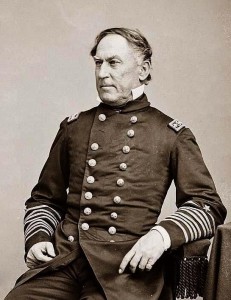Military Milestones from the King’s Proclamation to Richie’s MiG
Originally published at Human Events

This Week in American Military History:
Aug. 23, 1775: Less than two months after the Second Continental Congress issues its “Declaration on the Causes and Necessity of Taking Up Arms [against the British]” in which the Congress resolves “to die free men rather than live as slaves,” King George III issues his own proclamation declaring the American colonies to be in a state of rebellion.
The king adds, “not only all our Officers, civil and military, are obliged to exert their utmost endeavours to suppress such rebellion, and to bring the traitors to justice, but that all our subjects of this Realm, and the dominions thereunto belonging, are bound by law to be aiding and assisting in the suppression of such rebellion, and to disclose and make known all traitorous conspiracies and attempts against us, our crown and dignity.”
Aug. 23, 1864: Union Naval forces under the command of Adm. David Glasgow Farragut — best known for purportedly uttering the command, “Damn the torpedoes! Full speed ahead!” — take Fort Morgan, effectively ending the near-month-long battle of Mobile Bay.
Aug. 24, 1814: British forces under the command of Maj. Gen. Robert Ross close with and defeat a mixed American force of Continental Army regulars, Marines, sailors, and militia under overall command of U.S. Army Brig. Gen. William Henry Winder in the battle of Bladensburg, Maryland on the road to Washington, D.C. during the war of 1812.
The disastrous defeat of the Continentals at Bladensburg will enable the British to march on, sack, and burn the nation’s capitol within a few hours. But according to legend, the British are so impressed by the indomitable stand of the American Marines and sailors — who “broke two British regiments” during the fighting — that the commandant’s house and the Marine barracks will be spared the torch when Washington is burned.
Aug. 25, 1944: U.S. and French Army forces liberate Paris. The Germans fall back.
The BBC reports: “This evening French, American and Senegalese troops marched triumphantly down the Champs Elysee to ecstatic cheers of Parisians, young and old.”
Aug. 28, 1862: The Second battle of Bull Run (known to many Southerners as Second Manassas) opens between Union Army forces under the command of Maj. Gen. John Pope and Confederate forces under Maj. Gen. Thomas J. “Stonewall” Jackson (Gen. Robert E. Lee in overall command).
Within days, Confederate forces will drive Union forces from the field, not unlike what happened at First Bull Run/Manassas on July 21, 1861.
Aug. 28, 1972: U.S. Air Force Capt. Richard Stephen Richie, flying an F-4 Phantom, shoots down his fifth MiG over North Vietnam, becoming the Air Force’s first ace of the war.
But to hear Richie tell it, it was just a ride. “My fifth MiG kill was an exact duplicate of a syllabus mission, so I had not only flown that as a student, but had taught it probably a dozen times prior to actually doing it in combat,” he says.
AUTHOR’S NOTE: “This Week in American Military History,” appears every week as a feature of HUMAN EVENTS.
Let’s increase awareness of American military tradition and honor America’s greatest heroes by supporting the Medal of Honor Society’s 2010 Convention to be held in Charleston, S.C., Sept. 29 – Oct. 3, 2010 (for more information, click here).